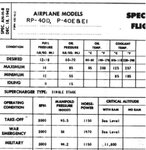Hello,
Well, obviously you disagree -dislike in fact- with my real trials based flight model. I admit, may i made some mistakes...
If you 're such a scientist, will you show your own models of mecanics of flight, instead of pollute us with idiomatic assessments and hollow sentences.
But you aren't to good on physics aren't you? You speak a lot obout it and surprisingly never use it...
So I suggest you, to show us how fluent you are in physics in order to support your arguments. Or leave definitly all reference to that science, since you don't know what you're talking about, as for soviet, finish or british ToT trials.
Regards
VG-33
06-20-2009, 11:09 PM
#74
Soren
Posts: 5,763 Sorry but you're the one using ridiculous Clmax figures VG-33, not me.
Or are you to suggest that you know more than the guys at the National Advisory Committee for Aeronautics??
Also I suggest you leave this argument until you start accepting the reality of things
Well, obviously you disagree -dislike in fact- with my real trials based flight model. I admit, may i made some mistakes...
06-15-2009, 04:55 AM #13
Soren
Senior Member
Like I've said before I'd take the Soviet data above with a large handful salt. But that's just my advice to you guys, you are free to believe in what you want ofcourse. I will however note that the Hurricance was in general considered a better turnfighter than both the Spitfire Bf-109.
If you want to know the true turn performance of these fighter aircraft then I suggest you take a look at the physics, in my experience it never lies, ever.
__________________
If you 're such a scientist, will you show your own models of mecanics of flight, instead of pollute us with idiomatic assessments and hollow sentences.
But you aren't to good on physics aren't you? You speak a lot obout it and surprisingly never use it...
So I suggest you, to show us how fluent you are in physics in order to support your arguments. Or leave definitly all reference to that science, since you don't know what you're talking about, as for soviet, finish or british ToT trials.
Regards
VG-33
Last edited:

